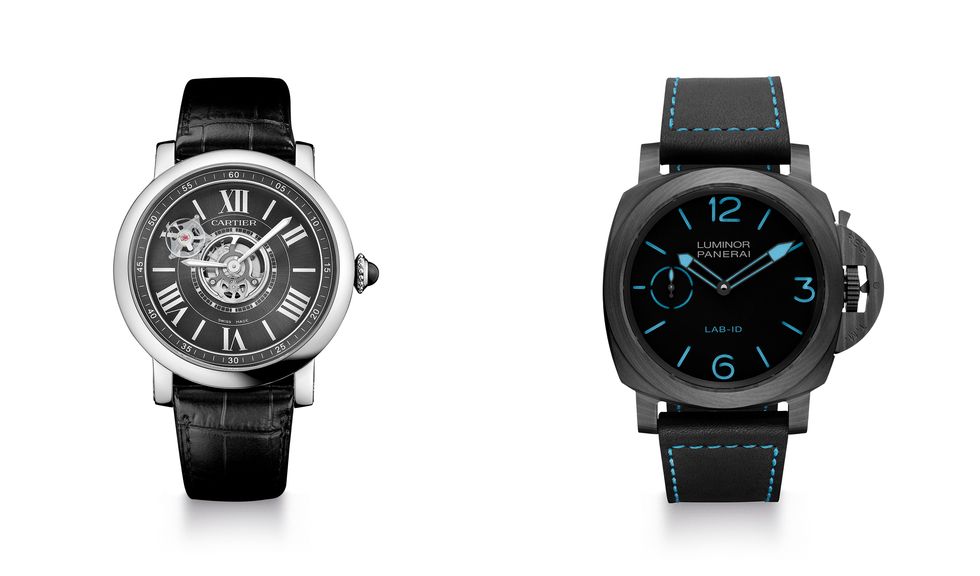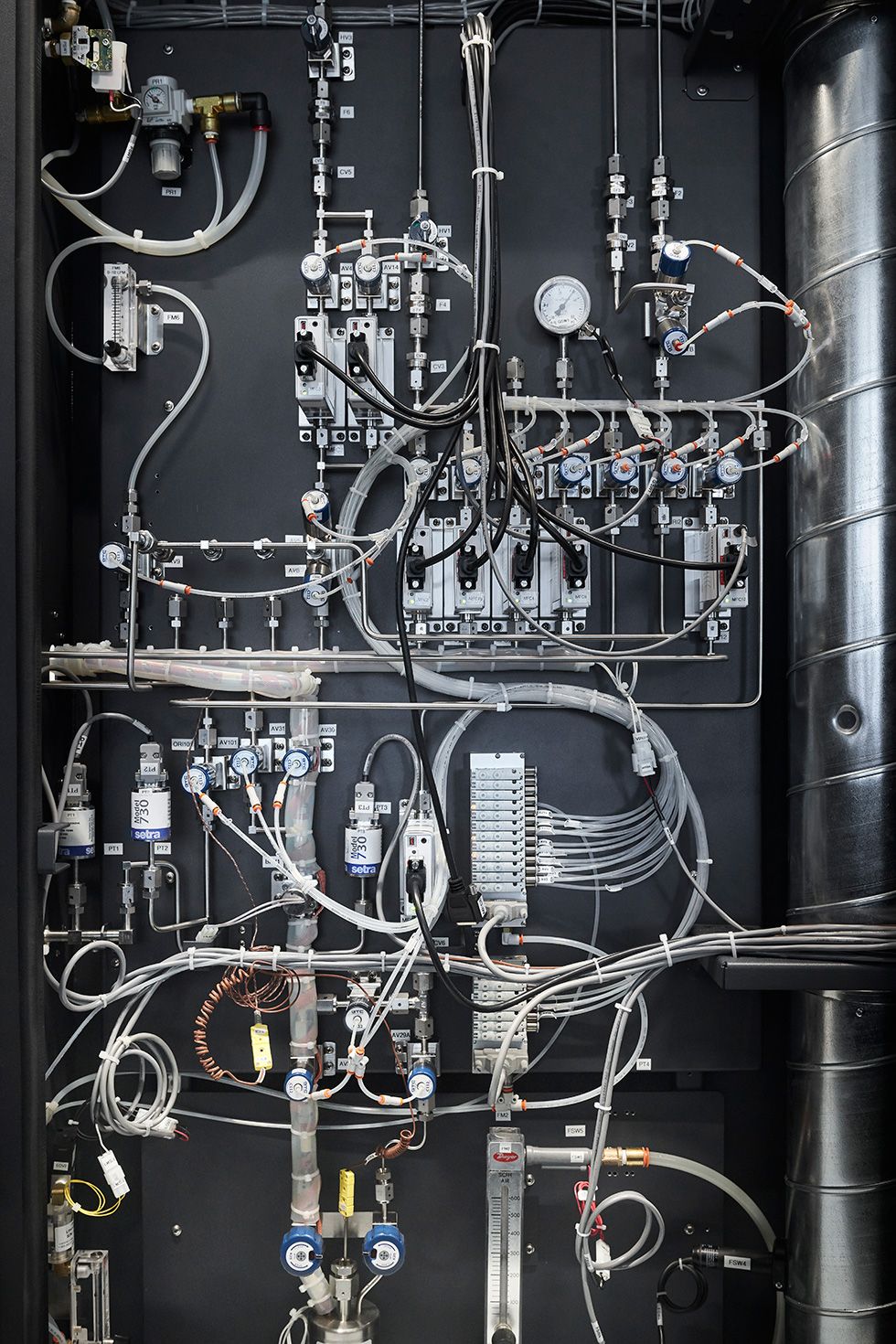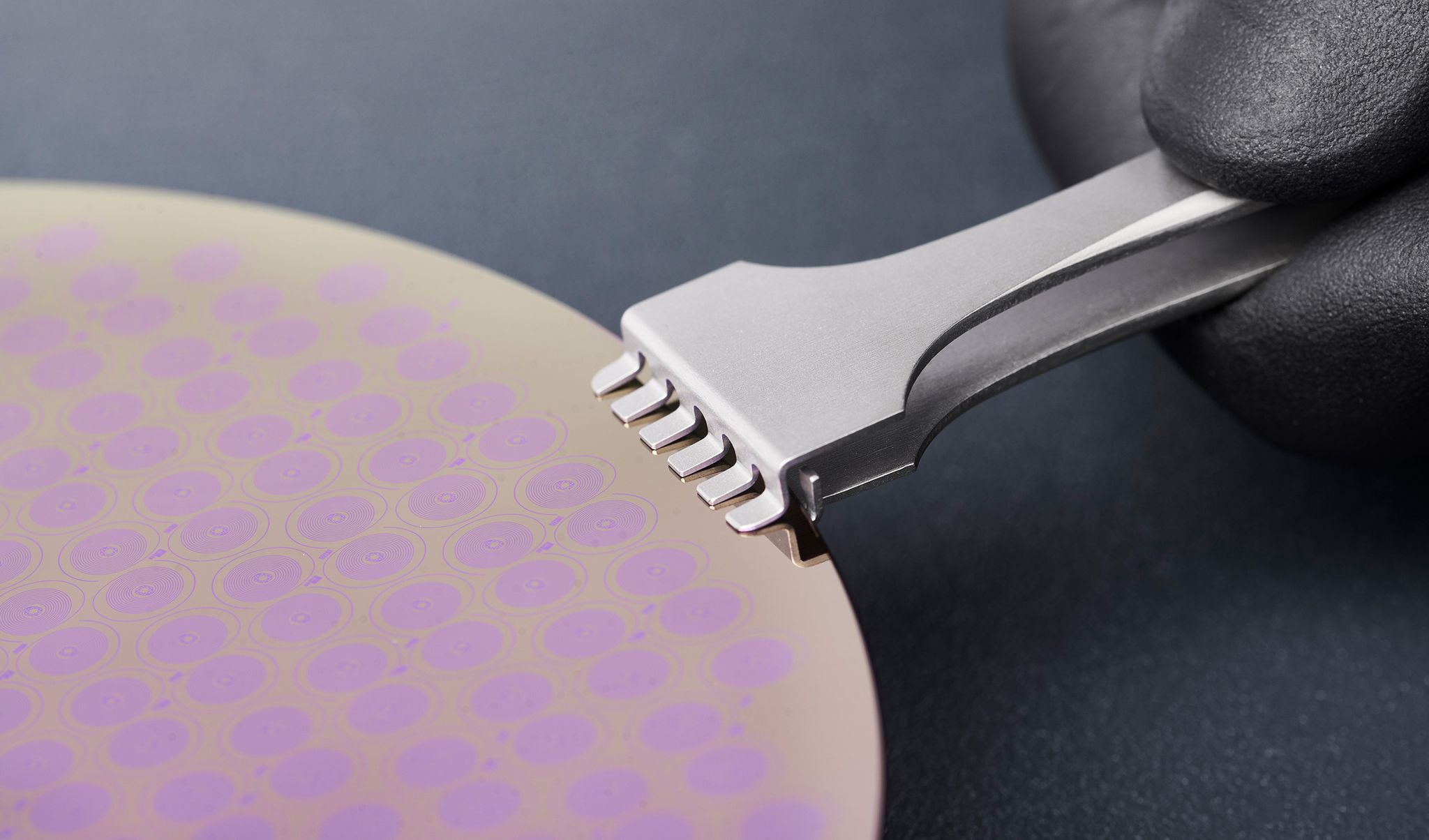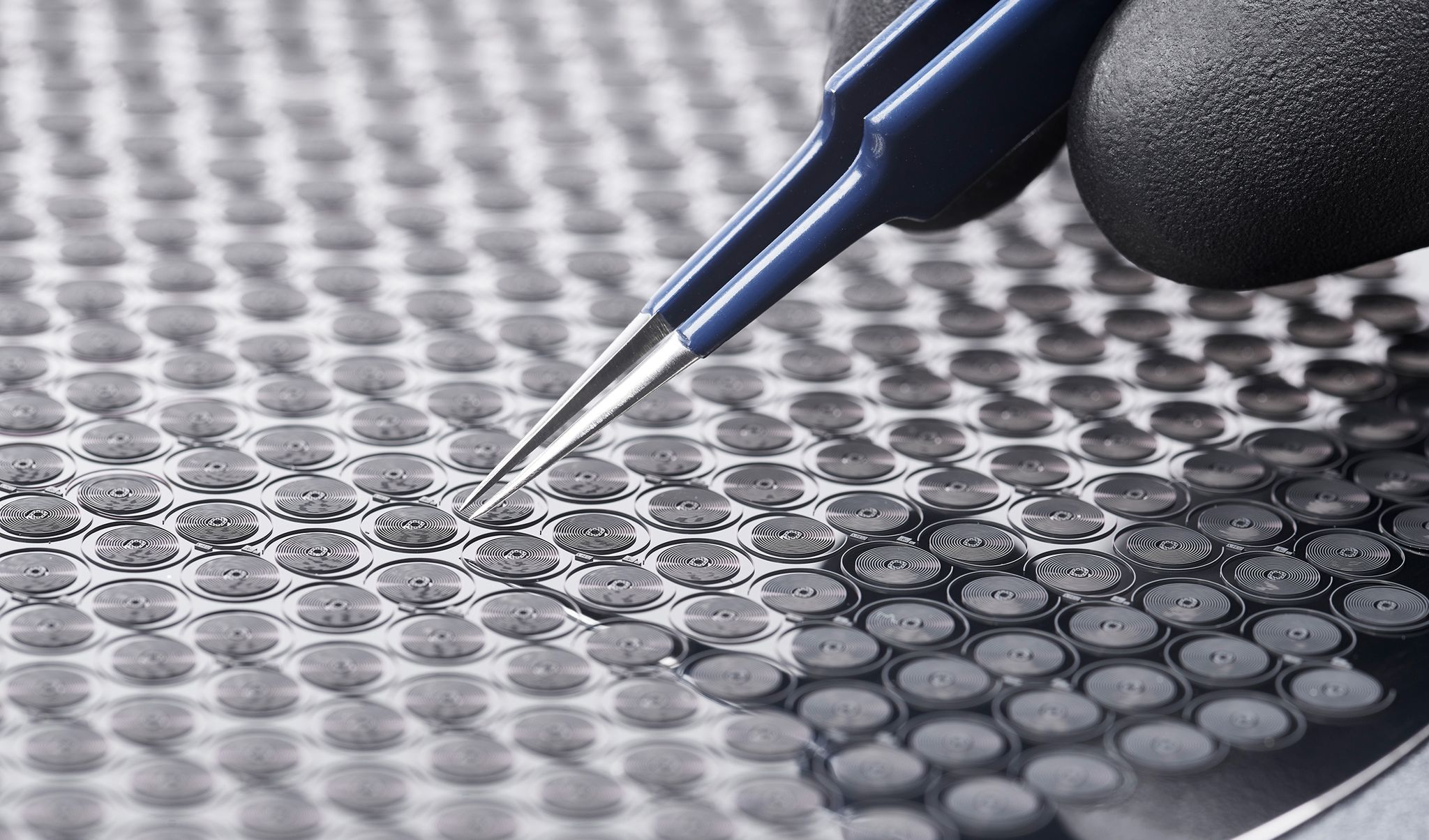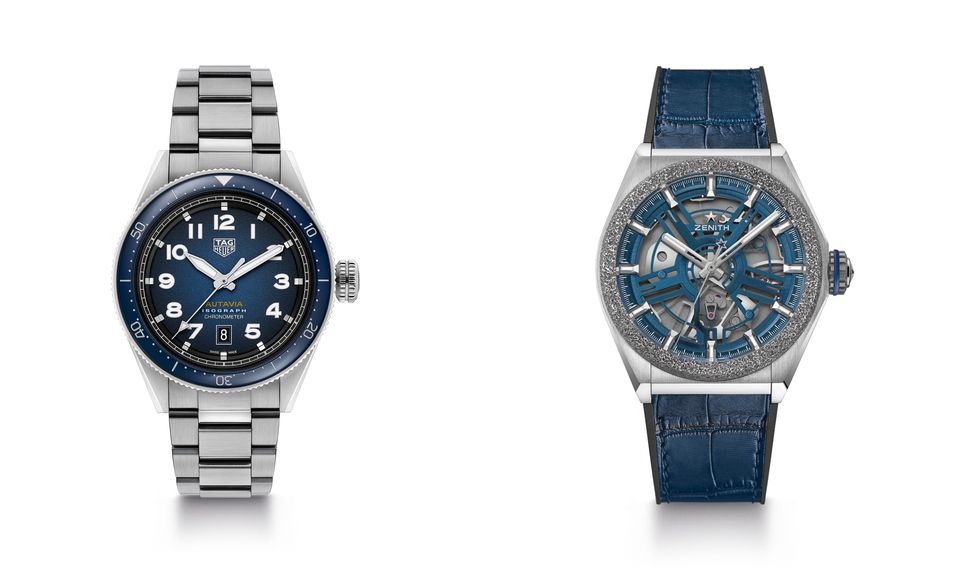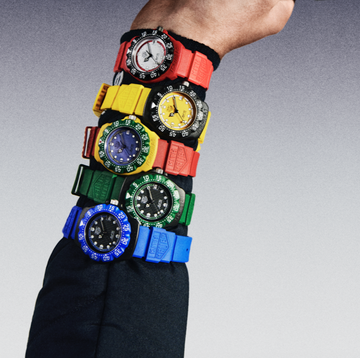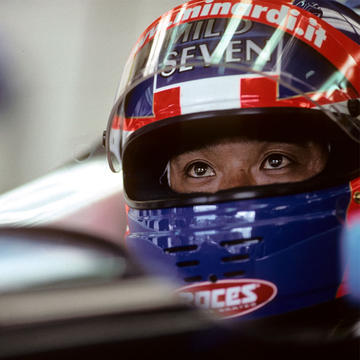In the world of watchmaking, there could hardly be two figures more diametrically opposed in their approaches and preoccupations than Roger W Smith, master of the Daniels Method and custodian of the greatest legacy in artisan horological craft, and Guy Sémon, the physicist, mathematician and supernova-level brainiac who, at TAG Heuer, is taking horology in directions that are more Star Trek than star wheel.
Smith, in his Isle of Man workshop, equips himself with the traditional tools of the watchmaker. Sémon, in a research unit occupying a sizeable portion of TAG Heuer’s HQ at La Chaux-de-Fonds, Switzerland, has chemical reactor ovens and a transmission electron microscope the size of a small apartment, which can photograph atoms.
Sémon isn’t overly concerned with the work of Breguet, Daniels or anyone else in the field: “I go outside watchmaking. I read mathematics papers, physics books, and I see things that give me ideas for watchmaking,” he says. “When you do that, you see that in watches we’ve really only just opened the door to a very, very big room.”
At the moment, however, the two would have quite a lot to talk about. In Sémon’s case, that means a new hairspring grown in an oven from nanoparticles, which has the potential to change the industry; and the rolling out of Zenith’s flexible-silicon mega-movement that’s been touted (by that retiring master of understatement, Jean-Claude Biver) as even more important than that.
In Smith’s case, meanwhile, it means a project to apply nanoparticles to the exterior of crucial movement components, in a bid to eliminate the need to ever service a watch — an aim of hardly trivial importance in itself. And actually, that’s just scratching the (unscratchable) surface of the fast-developing world of watchmaking’s boffin branch right now. Nanofabrication, compliant materials, new component geometries, revolutionary springs and parts; the business of applying quantum mechanics to traditional horology is looking increasingly vibrant.
That’s not a new phenomenon. It’s almost two decades since Ulysse Nardin brought ion-etched silicon components to the watch world, and the modern era has seen regular appearances of seminal concept watches like the Cartier ID models, TAG Heuer Mikrogirder and Mikropendulum and the Panerai Lab-ID, as well as the wide adoption of silicon and other anti-magnetic materials at Swatch Group.
But things do seem to be taking a few fresh turns and the concept is bearing real fruit. Let’s dig in.
Windows onto the past
It begins, as things so often do, with 12th-century stained glass. When researchers at Manchester Metropolitan University (MMU) inspected the windows of York Minster, one of England’s greatest medieval cathedrals, they discovered the oldest windows had the richest lustre, due to the properties of nanostructures present.
“Incredibly, this research found that the most ancient windows owed their rich colours to nanoparticles of gold chloride and other metal oxides and chlorides,” Smith says. “This was because those old craftsmen had an instinctive understanding and ability to manipulate these materials, often using heat.”
In other words, there’s nothing new under the sun, even down at the nano-level of a millionth of a millimetre. What those old craftsmen didn’t have, however, was my new favourite terminology in watchmaking, “magnetron sputtering”: it should be a Doctor Who villain’s name but is, in fact, a process of depositing one-atom-thick material onto a given surface. It’s this that Smith and MMU are using to deploy nano-coatings of the dry lubricant compound molybdenum disulfide onto watch components.
Friction, and the reliance on oil-based lubricants to avoid it, remains the number one nasty in watchmaking; what Smith describes as its “Achilles’ heel”. Reducing friction and eliminating the need to service watches as the oil degrades and congeals, has been horology’s major project since Breguet attempted it with his Natural Escapement, and it’s one of the things that makes materials like silicon, which creates little friction and requires no lubrication, so enticing.
Nano-coatings offer another route. Others have investigated this path before in various guises: Cartier in its ID Two concept watches in 2007 and 2012, Jaeger-LeCoultre with its Extreme Lab models and Panerai with 2017’s guaranteed-for-50-years-without-a-service Lab-ID (do you sense a running theme in the names?).
Last summer, Smith was approached by MMU scientists Dr Samuel Rowley-Neale and Dr Michael Down as they sought a platform to demonstrate their research into the application of 2D coatings within a machine. “Watches,” Smith says, “are pretty much the epitome of a machine.” A working watch, a version of Smith’s Series 1, will be ready by the end of October, in which every movement component will have a one-atom-thick covering of molybdenum and, in theory, require no lubricant oil.
“We’re effectively merging the classical mechanics in my watches with the quantum mechanics in the 2D coatings,” says Smith, noting that the dry lubrication system will theoretically outlast the watch itself. “Given that I build my watches with an architecture designed to work for at least several hundred years, this was hard to fathom but reaffirmed our aim to produce a watch which, unless compromised by an external impact, never needs to be serviced.”
Spring is sprung
Applying nanoparticles to a component is one thing; growing components out of the nanoparticles themselves is quite another. And it’s this that has enabled Guy Sémon and TAG Heuer to make a seismic leap forward in watchmaking, one which is paying dividends right now. The component in question is the hairspring, the thorny little spiral representing the heartbeat of every mechanical wristwatch. Its requirement for absolute consistency in its tiny oscillations, and susceptibility to shocks, heat and magnetic fields, make it a monumentally difficult thing to produce at scale.
Complex alloys and even more complex manufacturing processes are required. Rolex makes its own by flattening a 30cm x 10mm rod of alloy into a 3km-long wire and then into a ribbon just 45 microns thick that can’t vary by more than 0.2 microns. Besides Rolex, and the few brands supplied by Parmigiani-associated business Atokalpa, almost the entire Swiss industry is supplied by Swatch Group, sole maker of the Nivarox hairspring alloy.
But what if you could just chuck some ingredients in an oven, go off for a long lunch and come back to 300 finished, identical hairsprings? And what if those hairsprings were far superior in their working properties than the traditional alloy spirals, and also cheaper to produce? And furthermore, what if you could take the specification for any hairspring for any watch movement ever made, load those specs into an algorithm and cook up the required hairspring in the same way?
That, effectively, is the remarkable advance Sémon and his team have achieved with the launch of the Isograph hairspring that has been rolled out, as if to prove its strength and reliability, not in a limited haute horlogerie piece, but in TAG Heuer’s stylish new sports/lifestyle watch, the Autavia Isograph (although the tech did see the first light in a more limited, high-end model, the Carrera Calibre Heuer 02T Tourbillon Nanograph). The spring is formed from tubes of carbon molecules which are infiltrated with amorphous carbon: the whole structure is grown on a saucer-sized silicon wafer from geometrically precise deposits of iron atoms which, when gas-treated with ethylene and hydrogen in a high temperature chemical reactor oven, perform a magical transformation.
What’s truly revolutionary about this, and not just in watchmaking, is the way in which it harnesses the properties of nanotubes to create a working, flexible 3D component. Or as Sémon explains, “at the atomic scale, the properties of nanotubes are very impressive, but this is the first time we keep atomic properties at the microscopic scale.”
The technology was developed over 12 years at the University of Utah in Salt Lake City, and Sémon describes with glowing admiration the vision of Jean-Claude Biver in backing him to bring it to TAG Heuer. The possibility is not just to improve performance in watches, but to eventually remove TAG Heuer, and anyone it supplies should it scale up production, from reliance on Swatch Group. That really is significant.
Interestingly, Swatch Group this year launched a new and improved antimagnetic hairspring alloy, Nivachron (only for its own brands for now), but presumably targeted at its customers in the long term, with Audemars Piguet named as a partner in the project. That’s interesting not least because Swatch Group has been leading the charge towards silicon as the main contender for the future of hairsprings, as adopted by Omega, Blancpain and Breguet. The arrival of Nivachron, and its launch first-off in a (spectacularly ugly) watch from Swatch itself, the Flymagic, appears to nix the idea that silicon might offer a long-term solution for hairsprings at the more affordable end of the market.
Update: since this article appeared in print in September 2019, we have learned that TAG Heuer has delayed the roll-out of the Isograph movement until further notice. Any previously delivered models have been re-called, and the design will see the light of day as an Autavia Calibre 5 Chronometer in 2020 instead. It is reported - by Calibre11 - that TAG Heuer underestimated demand for the Isograph, and that coupled with some technical difficulties pairing the new hairspring with the Calibre 5 movement and producing the new calibres at scale, has led to the delay.
Silicon valleys
Sémon is especially dismissive of silicon for hairsprings: “it’s very expensive, you can’t adjust it, it’s limited in terms of shape optimisation and it’s too fragile to put in sports watches.” Perhaps he would say that: even if TAG wanted to manufacture silicon hairsprings it couldn’t, since CSEM — the joint venture of Swatch Group, Rolex and Patek Philippe — for now holds the patent on the technology in Swiss watches. When Richemont-owned Baume & Mercier tried to get in on the act with its Clifton Baumatic, announced at SIHH last year, the patent was waved in its face and it had to back down. The patent is up in 2021 and that could mean a watershed. The fact that unlike Swatch Group, Rolex and Patek are yet to go further with silicon beyond merely dipping their toes does pose questions, however.
Nevertheless, there are others, outside Switzerland, who are backing silicon as the future of balance springs. A new entrant is Firehouse Horology, a New York start-up that sounds like a hipster microbrand but has involvement from heavyweight denizens of the US watch community, and is working in partnership with Columbia University. In Hong Kong, meanwhile, the engineering firm Master Dynamic has developed a silicon hairspring with an overcoil, which should make it adjustable.
But, of course, it’s not just in hairsprings where silicon is relevant: whatever Sémon states its weaknesses to be in that area, in the physics of compliant materials he’s found it to be positively spectacular. In 2017, Zenith (in the LVMH stable alongside TAG Heuer) announced the Defy Lab, a curio with technology also developed in Sémon’s laboratory. It did away altogether with the hairspring, the balance, the escape lever and associated parts (39 in total), replacing them with a single, complex circular component the diameter of the movement itself and etched from silicon, in which an interlocking network of blade springs oscillate furiously away to dramatically accurate effect. With a rate variation of around 0.3 seconds per day it immediately became the world’s most accurate mechanical watch, along with the antimagnetic, lubrication-free properties inherent to silicon fabrication.
After a couple of years of tweaking by Sémon’s team — including a reworking of the escape wheel and increasing the frequency of oscillations from 15Hz to 18Hz — this has finally been rolled out by Zenith in 2019 as the Defy Inventor, with a plan eventually to make 2,000 annually. It’s launching this autumn, and while its aesthetics may not be for everyone, particularly with the constant vibrations of the silicon plate visible through the dial, the arrival onto the market of such a revolutionary piece of horology feels significant. Whether it’s really the future of watchmaking or not, we’ll just have to see.
Like this article? Sign up to our newsletter to get more articles like this delivered straight to your inbox.

